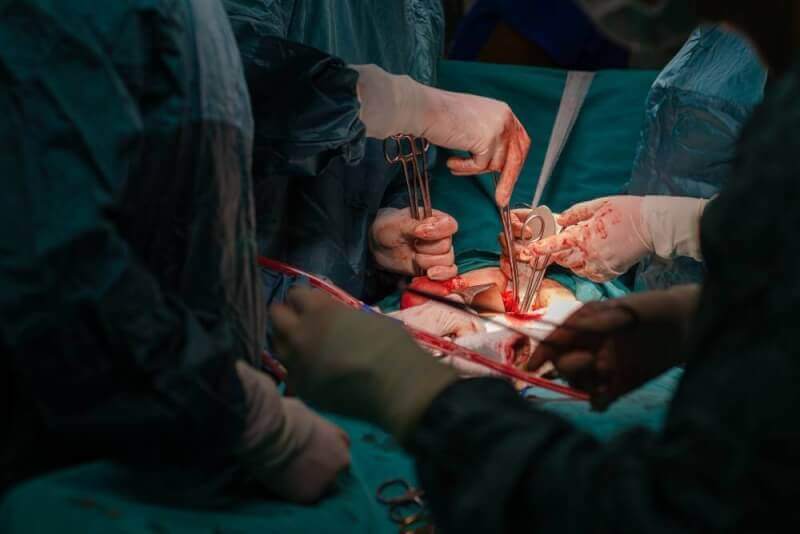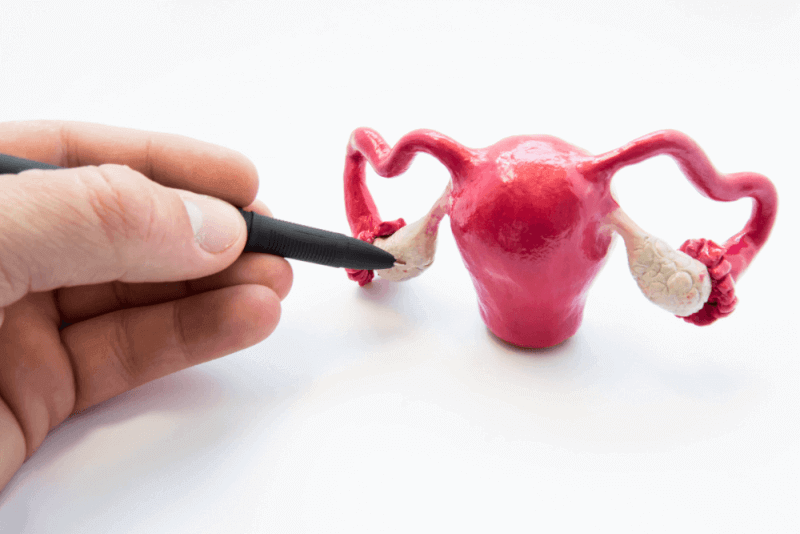30 Second Summary
- A hysterectomy is an operation to remove the uterus; it is usually performed on women between the ages of 40 and 50 and women become unable to give birth.
- This operation may be required for fibroids, endometriosis, adenomyosis, gynecologic cancer, uterine prolapse, abnormal vaginal bleeding and chronic pelvic pain.
- There may be postoperative pain and vaginal bloody discharge; full recovery takes several months and sexual intercourse can begin after six weeks.
- Types of hysterectomy and types of surgery: partial, total, radical hysterectomy; there are vaginal, laparoscopic and abdominal types of surgery.
What is Hysterectomy?
A hysterectomy is an operation to remove the uterus through surgical procedures. In a hysterectomy, the uterus and cervix, called the uterus in women, are removed through an incision in the abdomen. Depending on the type of surgery and the disease, the fallopian tubes, ovaries and organs or tissues around the uterus may also be removed. The uterus is the part of the body where the baby grows during pregnancy. Hysterectomy, which treats most gynecological diseases, is not performed unless it is mandatory for women who are planning to give birth. A woman who has had a hysterectomy can no longer menstruate or give birth. Diseases of the reproductive organs are treated permanently by hysterectomy. Hysterectomy, which is usually performed on women between the ages of 40 and 50, is among the most common surgeries. Gynecologists should perform the hysterectomy and the patient should be given general anesthesia.
Summary of Surgery
Duration of Surgery 1-4 hours
Anesthesia Method: General, Spinal, Epidural
Hospitalization Duration: 1-4 Days
Return to Work Period: 2-6 Weeks
Conditions requiring hysterectomy
Hysterectomy can be performed to treat most female diseases and there are many reasons for hysterectomy. Patients may need a hysterectomy if
- Fibroids: Benign tumors that can cause problems such as persistent vaginal bleeding, anemia, persistent pelvic pain, pain and pain during sexual intercourse, bladder pressure are called fibroids. If the fibroids are large and widely distributed, they can be removed from the uterus by hysterectomy.
- Endometriosis: The membrane lining the inside of the uterus is called the endometrium. The abnormal growth of the endometrium and reproductive organs to the outside of the uterus is called endometriosis. Endometriosis can be permanently cured by hysterectomy.
- Adenomyosis: A disease in which the endometrium grows larger than the uterine wall. Adenomyosis can also find a permanent solution with hysterectomy.
- Gynecologic cancer Hysterectomy can be performed if there is cancer in the uterus, reproductive organs and surrounding tissues. Especially for cancers that metastasize rapidly, a hysterectomy as soon as possible is essential for the health of other tissues and organs.
- Uterine prolapse When the muscles and ligaments in the pelvic area do not work properly, the uterus can prolapse into the vagina. This can cause urinary incontinence, difficulty emptying and intra-pelvic pressure. Uterine prolapse can be treated by hysterectomy and correction of pelvic tissues.
- Abnormal vaginal bleeding: A hysterectomy may be performed in women who experience very painful and profuse menstrual bleeding if this cannot be treated with medication or other surgical interventions.
- Chronic pelvic pain: Depending on the cause of pelvic pain, different treatments are tried. As a last resort, a hysterectomy can end pelvic pain.
Life After Hysterectomy
After waking up for a few hours after the hysterectomy surgery, it is necessary to stay under observation for a day. It is normal to have pain for a few weeks after surgery. Doctors prescribe painkillers for these pains. However, if the pain is abnormal, it may be necessary to see a doctor. Bloody discharge from the vagina after surgery is normal. This discharge may come for a few days or a few weeks. It is important to consult a doctor if the discharge is very severe and abundant. Blood loss can be dangerous for the patient.
Full recovery after hysterectomy can take several months. Heavy lifting should be avoided for one year after the procedure. Sexual intercourse should be avoided for six weeks. If you experience excessive pain or bleeding during sexual intercourse after six weeks, you should consult a doctor. It is normal for the patient to feel weak and sick after hysterectomy. However, vomiting, nausea and dizziness can be dangerous. In these cases, you should be under the supervision of a doctor. Since hysterectomy surgery is performed for therapeutic purposes, most patients feel relief after surgery. As the diseases that caused the surgery are eliminated, women feel healthier and happier as their pain and discomfort are eliminated. In some cases, especially in women who want to give birth, if the hysterectomy procedure was performed out of necessity, the patient may have psychological difficulties after surgery. If necessary, psychological support should be given to the patient after surgery to prevent this condition, which can lead to depression. Some menopausal symptoms may occur after a hysterectomy. The patient is considered to have already entered menopause after the procedure. Menopausal symptoms such as vaginal dryness, hot flushes and night sweats can also occur after hysterectomy and are normal.
Types of Hysterectomy
Hysterectomy is classified according to the parts of the uterus that are removed. There are three types of hysterectomy:
- Partial Hysterectomy
- Total Hysterectomy
- Radical Hysterectomy
Partial Hysterectomy
It is a type of partial hysterectomy, also known as supracervical hysterectomy. Only the body part of the uterus, the uterus, is removed. The cervix, fallopian tubes and ovaries are not surgically removed but left in the patient's body. Leaving the cervix behind may pose some risks. This is still a matter of research.
Total Hysterectomy
It is a type of hysterectomy in which the entire uterus is removed. In addition to the uterus, the cervix is also removed during the procedure. The most common hysterectomy is total hysterectomy. It is the least risky procedure for the female body and has the highest success rate.
Radical Hysterectomy
It is a type of hysterectomy in which, in addition to the uterus, the cervix, fallopian tubes, ovaries and all tissues in this area are removed. This method, which is generally preferred for cancer treatment, removes all reproductive organs and leads to a radical change in the patient's body.
Types of Hysterectomy Surgery
There are three different methods of surgical intervention to perform hysterectomy surgery:
Vaginal Hysterectomy
The procedure consists of removing the uterus through an incision in the upper part of the vagina. Melting stitches are placed inside the vagina. Vaginal hysterectomy is generally preferred for women with uterine prolapse and cancer patients. Since there is no incision outside the body, it is considered the fastest healing and the least risky method. Patients are usually discharged on the day of surgery.
Laparoscopic Hysterectomy
A small incision is made in the belly button, through which a tube with a small camera at the end is inserted into the body. This tube is called a laparoscope. Several small incisions are made through which surgical instruments are inserted into the body. Through these incisions or through the vagina, the uterus is cut into small pieces and removed. The patient is usually discharged after one day of observation. Full recovery takes longer than vaginal hysterectomy and shorter than abdominal hysterectomy. There are risks of complications but not too many. Robot-assisted laparoscopic hysterectomy is also available but not widely used. The procedure is performed using robotic hands instead of the physician's hand. It is not preferred because of its high cost.
Abdominal Hysterectomy
An incision is made in the abdomen large enough for the uterus to exit and the uterus is removed through this large opening. An incision is made in the sagittal axis from the umbilicus to the pelvis or in the transverse axis at the level of the pubic hair, and staples or sutures are used to close the incision. Abdominal hysterectomy is preferred for radical removal when the uterus is enlarged, in cancer patients and when tumors have metastasized to other tissues and organs. The patient is kept under observation for a few days after the procedure. The rate of recovery is slower than other methods and the risk of complications is higher. This method is not preferred unless absolutely necessary.











